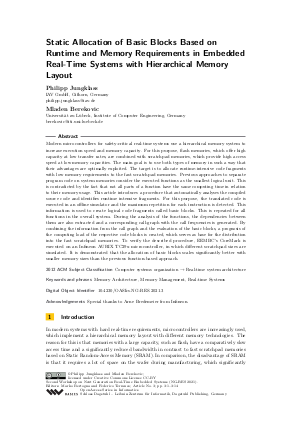@InProceedings{jungklass_et_al:OASIcs.NG-RES.2021.3,
author = {Jungklass, Philipp and Berekovic, Mladen},
title = {{Static Allocation of Basic Blocks Based on Runtime and Memory Requirements in Embedded Real-Time Systems with Hierarchical Memory Layout}},
booktitle = {Second Workshop on Next Generation Real-Time Embedded Systems (NG-RES 2021)},
pages = {3:1--3:14},
series = {Open Access Series in Informatics (OASIcs)},
ISBN = {978-3-95977-178-8},
ISSN = {2190-6807},
year = {2021},
volume = {87},
editor = {Bertogna, Marko and Terraneo, Federico},
publisher = {Schloss Dagstuhl -- Leibniz-Zentrum f{\"u}r Informatik},
address = {Dagstuhl, Germany},
URL = {https://drops.dagstuhl.de/entities/document/10.4230/OASIcs.NG-RES.2021.3},
URN = {urn:nbn:de:0030-drops-134790},
doi = {10.4230/OASIcs.NG-RES.2021.3},
annote = {Keywords: Memory Architecture, Memory Management, Real-time Systems}
}

 Creative Commons Attribution 3.0 Unported license
Creative Commons Attribution 3.0 Unported license














